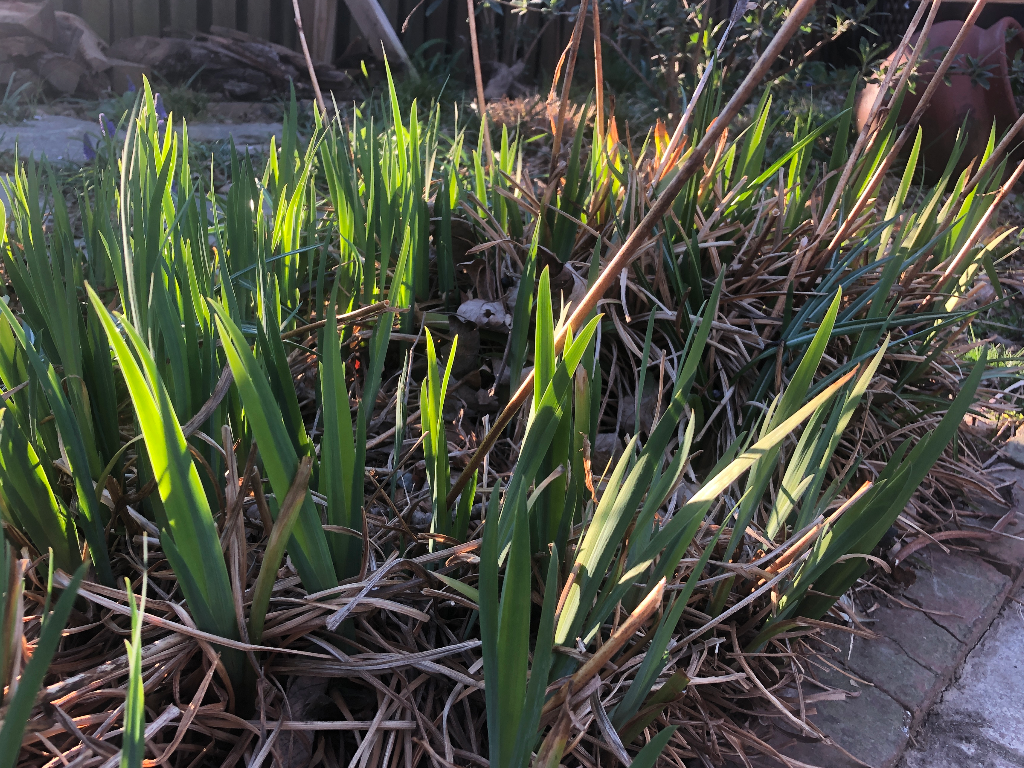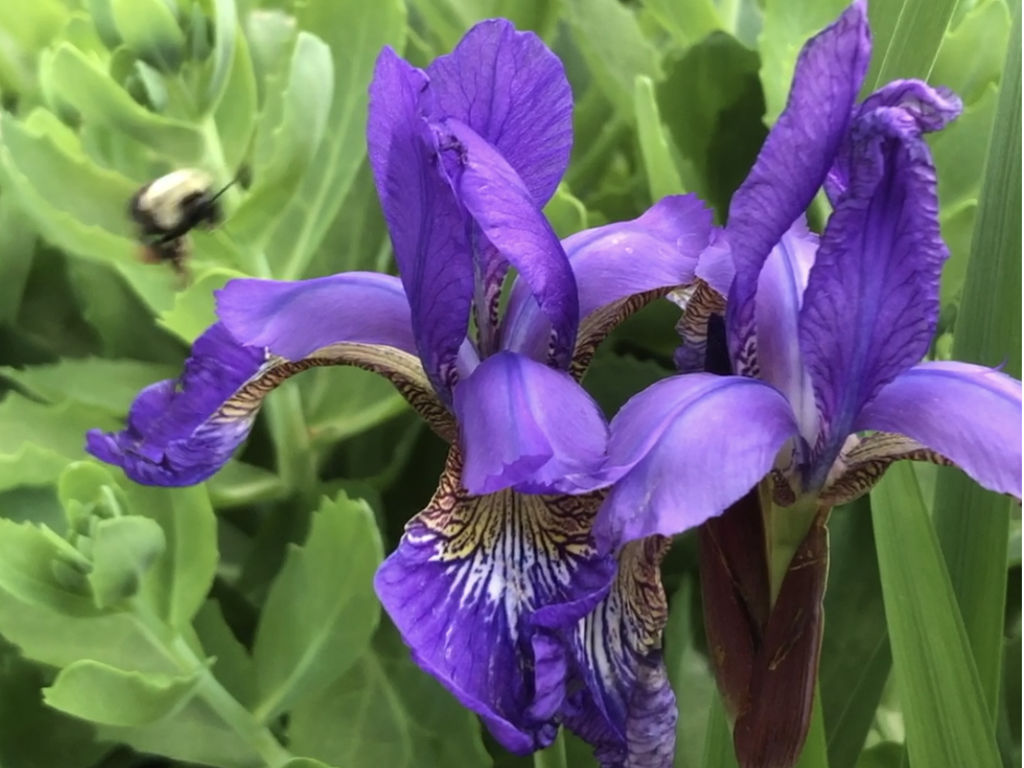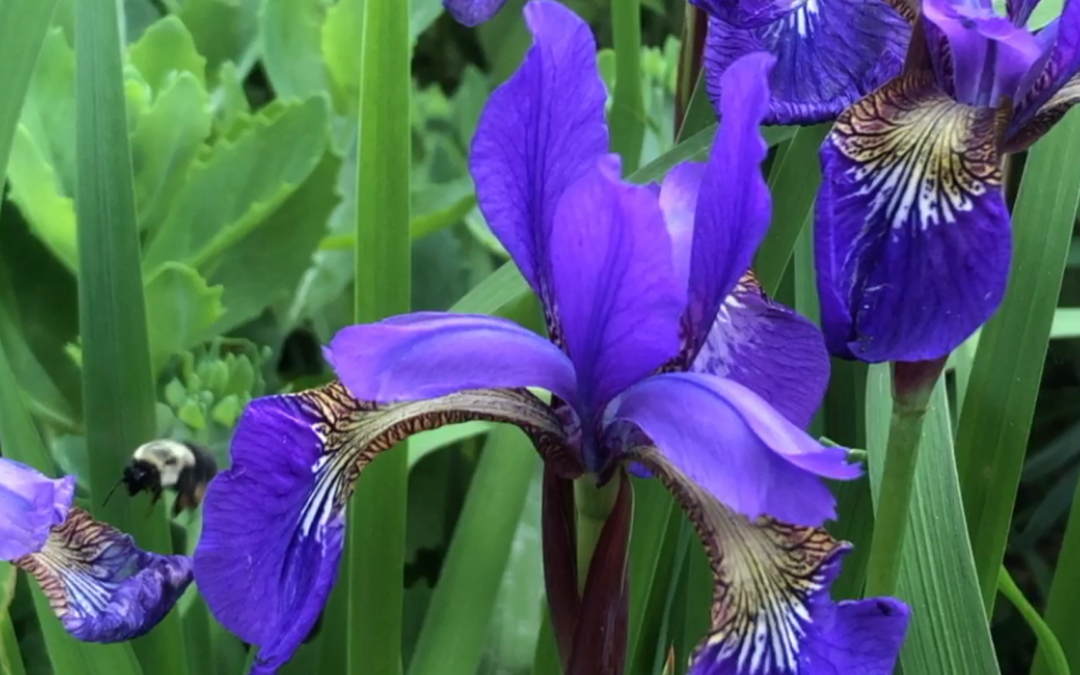Name and Classification
Common name: Blue Flag Iris
Botanical name (genus and species): Iris versicolor
Plant family: Iridaceae
Plant Description
- Plant size: 2 to 3 feet
- Plant life cycle: Perennial
- Foliage color: Green
- Plant type: Herbaceous
- Bloom color: Violet-blue to lavender
- Bloom time: Late spring to early summer
- Seasonal interest: Spring, Summer, Winter
- Preferred sunlight: Part Sun to Full Sun
- Soil type: Moist to wet
- Watering needs: Regular watering

Iris versicolor, also known as Blue Flag, boasts sword-like leaves and stunning flowers that can range in color from deep violet-blue to lavender. Blooming in late spring to early summer, the Blue Flag Iris stands tall, reaching heights of 2 to 3 feet. Its rhizomatous roots form dense colonies of plants that create a picturesque scene along the edges of ponds, wetlands, and rain gardens.
Native Iris thrive in moist to wet soils and prefer partial to full sunlight. The Blue Flag Iris offers a burst of color before many other native flowers begin to bloom and continues to shine with its striking foliage long after the blooming season has ended. Furthermore, the seed pods create a striking Winter display if left to persist.
Common Problems
Iris versicolor has very few problems. Sometimes plants will take 2-3 growing seasons before producing many flowers. Stay patient and know that Blue Flag Iris will be a top performer in the garden.
Care and Maintenance
Caring for the Blue Flag Iris involves ensuring a consistently moist environment, especially during the growing season. Mulching around the plant helps retain moisture and suppress weeds. Do not remove blossoms after flowering as this will NOT encourage new blossoms for this species. Instead, leave dead flowers to develop seed pods that can be admired throughout the winter. At Green Thumb, we like to cut the foliage back to about 6” from the ground in November, so that the dried seed pods are more visible. Dividing rhizomes every few years helps maintain vigor and prevent overcrowding.

Garden Uses
The Blue Flag Iris serves practical and aesthetic purposes. Its vibrant flowers attract pollinators, while the plant’s robust structure provides shelter for small wildlife. It is ideal for rain gardens and water features. This Iris brings a touch of sophistication to any landscape. Cut a few stems or greens for a captivating floral arrangement that will steal the spotlight indoors
Ecosystem Services
- Pollinator Habitat
- Wildlife Shelter
- Erosion Prevention
- Riparian Buffer
Beyond its aesthetic appeal, Iris versicolor contributes significantly to the ecosystem. Acting as a pollinator magnet, it attracts a host of insect species including bees, butterflies, beetles, moths, and ants. The dense foliage offers shelter for amphibians and insects, fostering biodiversity. Additionally, its robust, rhizomatous root system helps prevent soil erosion, making it an invaluable component of riparian buffers and wetland ecosystems.

Planting Suggestions
Enhance the beauty of your wetland garden by planting Blue Flag Iris alongside Hardy Hibiscus (Hibiscus moschuetos), Soft Rush (Juncus validus), and Sedges (Carex spp.). Or enjoy the vibrant blossoms of Iris versicolor in a flower garden alongside Joe Pye Weed (Eutrochium purpureum), and Cardinal Flower (Lobelia cardinalis). These plants create a dynamic, water-loving ensemble that thrives in Maryland’s unique micro-environments.
Cultural Significance
The Blue Flag Iris holds historical significance in various cultures. Some Native American tribes used iris roots for medicinal purposes but it is crucial to consult a medical professional before using any herbal remedy.
Iris root was used for gastrointestinal issues, lymphatic system support, and used topically.
Sources References
- Maryland Native Plant Society
- Lady Bird Johnson Wildflower Center
- University of Maryland Extension

